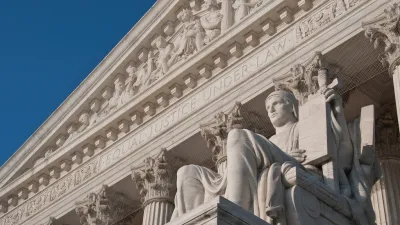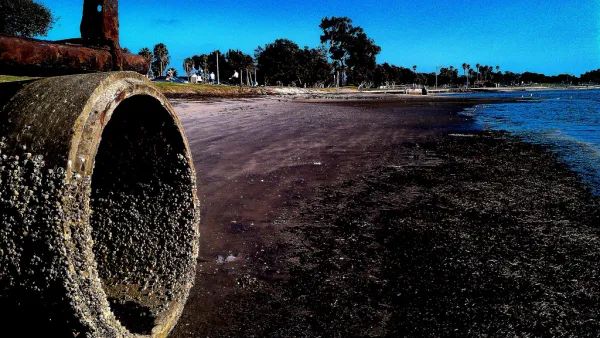In a forceful op-ed, professor John D. Echeverria argues the Supreme Court's recent "blockbuster" land use decision will "result in long-lasting harm to America’s communities." Not so fast, says Rick Hills, the decision offers an "exit strategy".

For two contrasting takes on the U.S. Supreme Court's recent decision in Koontz v. St. Johns River Water Management District, see Vermont Law School professor John D. Echeverria's blistering op-ed in The New York Times and NYU law professor Rick Hills' more measured interpretation in PrawfsBlawg.
Echeverria argues that the ruling "makes it hard for communities to get property owners to pay to mitigate any environmental damage they may cause."
"Cities and towns across America routinely attach fees and other payment obligations to permits, for example, to support wetlands mitigation banks, to finance roads, to pay for new schools or to build affordable housing," he explains. "While, to be sure, such mandates must be reasonable under the Constitution, the revolutionary and destructive step taken by the court in Koontz is to cast the burden on the government to justify the mandates according to the heightened Nollan-Dolan standard. This is contrary to the traditional court approach of according deference to elected officials and technical experts on issues of regulatory policy. Moreover, this heightened standard will result in a huge number of costly legal challenges to local regulations."
Hills, on the other hand, says the ruling shows a court unwilling, or unable, to "duplicate the work of state courts in policing conditions on literally hundreds of thousands of land-use permits..."
"Thankfully," he continues, "Koontz carefully preserves a convenient albeit disingenuous 'remedial' exit strategy that should insure that the decision is a dead letter."
FULL STORY: A Legal Blow to Sustainable Development

Analysis: Cybertruck Fatality Rate Far Exceeds That of Ford Pinto
The Tesla Cybertruck was recalled seven times last year.

National Parks Layoffs Will Cause Communities to Lose Billions
Thousands of essential park workers were laid off this week, just before the busy spring break season.

Retro-silient?: America’s First “Eco-burb,” The Woodlands Turns 50
A master-planned community north of Houston offers lessons on green infrastructure and resilient design, but falls short of its founder’s lofty affordability and walkability goals.

Test News Post 1
This is a summary

Analysis: Cybertruck Fatality Rate Far Exceeds That of Ford Pinto
The Tesla Cybertruck was recalled seven times last year.

Test News Headline 46
Test for the image on the front page.
Urban Design for Planners 1: Software Tools
This six-course series explores essential urban design concepts using open source software and equips planners with the tools they need to participate fully in the urban design process.
Planning for Universal Design
Learn the tools for implementing Universal Design in planning regulations.
EMC Planning Group, Inc.
Planetizen
Planetizen
Mpact (formerly Rail~Volution)
Great Falls Development Authority, Inc.
HUDs Office of Policy Development and Research
NYU Wagner Graduate School of Public Service



























